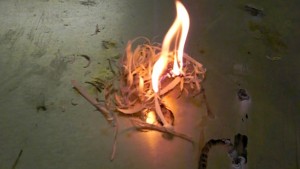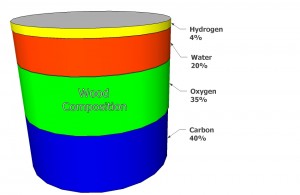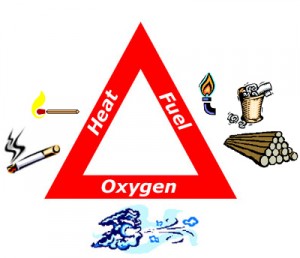Fire has been around since the first man walked on planet Earth, so why do you need to know any science about it?
Technically you don’t need to know that much about it. Just like you don’t need to know how a lawn mower engine works, or how yeast works to raise bread dough, you don’t need to know to change a tire, and of course you have no need to know the aerodynamics of a spiraling football, if you are a hunter you don’t need to know the parts of a gun and how it works, if you are a seamstress you don’t need to know how a sewing machine forms a locking stitch,
You don’t need to know any of these things, just point and shoot, or just let the machine do the work and don’t think about it, just throw the dang football, who cares how a nice perfect spiral is formed. No you don’t need to bother learning any of the details of the things you do in life, just go along like a robot, doing what you have seen others do, not learning or knowing anything beyond the basics.
Why go to the trouble of learning how a fire comes to be, when I can just fire up a lighter and get one going? If a person is smart, if an individual is intelligent, if someone wants to be properly prepared, then that person will learn how things work, what makes things happen, how else could he troubleshoot a problem?
Throughout time one man has just copied the success of another man without knowing why certain things were done or why a specific sequence was followed. That’s like blind faith, it’s apathetic really. Think of it this way, if a quarterback starts having trouble with his passes and has no idea whatsoever how aerodynamics come into play in effective passing, how can he correct his game? It will be hit and miss, more a matter of luck, or plain repetition. If he understands the why and how of it, he can watch what he is doing or what is happening and determine the problem and make corrections. If a person bakes bread and suddenly finds the bread doesn’t raise he may find that he may have killed the yeast with too hot water. See without knowledge and understanding if problems arise, the solutions are shots in the dark until something works.
So what are some facts about fire that are important?
- Fire is a chemical reaction, an exothermic reaction, in other words a reaction that produces excess heat
- Wood is made of cellulose which burns at between 400°F and 500°F
- Seasoned wood is still about 20% water
- To burn 10 pounds of wood completely it takes 1,100 cubic feet of air
- Water in wood can’t get much over 220°F, but cellulose has to be over 400° to burn, there is no fire until the water is gone
- Cellulose is made of carbon, oxygen, and hydrogen. Each pound of hydrogen, when it burns makes 9 pounds of water
- A fire has 3 stages, 1st it burns off the water and CO2 (smoke), 2nd it burns superheated gases (blue flames), 3rd it burns carbon (coals glowing)
- A pound of wood has 6000 to 7000 BTU’s and it only takes 187 BTU’s to take 1 pound (pint) of water from 35°F to boiling
- The Fire Triangle is a diagram showing the 3 elements needed to have fire, namely heat, fuel, and oxygen
To properly start a fire you need to start small and work into larger fuel, so in other words it’s like growing a plant, you start small with a seedling and nurse it along until it grows to full size. It requires more care and attention in the beginning, then as it takes hold you can ease off a bit and relax.
A small ember or flame cannot start a log on fire, that would be like a mouse pushing a locomotive. Match your starter fuel, known as tinder, to your heat source, the ember or flame.
Remember in the facts above that wood contains 20% water and the 3 stages of fire, your ember or flame works best when your tinder is small, fine and dry, only then can it easily burn off the water and CO2 then start the tinder burning. Add small twigs which you have previously gathered, slowly, don’t choke the tiny fire. Adding to much too soon does two things, it cuts off some of the oxygen supply (remember fire triangle) and absorbs some of the heat (again the fire triangle) possibly stopping the chemical reaction, killing the fire. That’s all there is to starting a fire, just pay attention to the essentials and it will work all the time.
Much more coming on fire from time to time in the future, and also in our training materials and Rendezvous.
For Wilderness Innovation, this is Perry Peacock, Simplifying Survival






